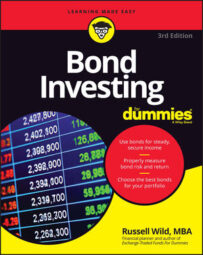Here are some answers to frequently asked questions about bond investing. So just what are bonds? A bond is basically an IOU. You lend your money to Uncle Sam, to General Electric, to Procter & Gamble, to the city in which you live — to whatever entity issues the bonds — and that entity promises to pay you a certain rate of interest in exchange for borrowing your money.
This is very different from stock investing, where you purchase shares in a company, become an alleged partial owner of that company, and then start to pray that the company turns a profit and the CEO doesn’t pocket it all.
What is a primary or secondary bond issue?
All bonds are traded through brokers. But some bonds available for sale are new or primary issues. Others are secondary issues. Yes, it’s something like buying a new versus a used car — except the used bond isn’t necessarily any cheaper.
In fact, bonds that are just issued, especially in the municipal-bond arena, quite often offer juicier deals.
Bottom line: Ask your favorite broker — and your favorite broker’s competitors — for a listing of all new issues. Then compare and contrast the yields on the newbies versus the oldies. You may be impressed. The mechanics of buying a primary issue differ from one brokerage to the next, but generally, you can place an order at a specific price and yield.
If the price goes up and the yield goes down between the time you place the order and the bond goes to market, you have the opportunity to back out of the deal. If you trade stocks, you’ll recognize this situation as similar to a limit order on a stock.
Do I save money with a full-service broker?
Many people assume that discount and online brokers allow you to trade bonds more cheaply than with full-service brokers, and that can be true sometimes. But it isn’t always the case.
If you’re going to trade individual munis, Olson suggests having a number of accounts with different brokers, including both discount and full-service brokers. Sometimes, you’ll be surprised where you get the best deals. That’s true both for new issues of bonds and for the secondary market.
What are “excessive” bond markups?
You buy a bond from a broker. You pay $10,000. The broker bought the bond that same morning for $9,700. You sell a bond. You get $10,000. You do your research and discover you sold it to a broker who then turned around and sold it for $10,300. Are these fair spreads, or are they excessive?
There’s no hard and fast rule. Many factors must be considered, but industry insiders tend to look askance at any markups that exceed 3 percent — and so should you. If your bond deal sees a cut this big, or even close, you should start asking questions.
“Markups, markdowns and commissions have to be fair and reasonable,” says Gerri Walsh, vice president for investor education with the Financial Industry Regulatory Authority (FINRA). “Don’t hesitate to ask your broker to provide the details about markups, markdowns or any fees or commissions associated with your investment. These costs ultimately impact the overall return on your investment and you have a right to know this information.”
If you do feel these costs are excessive, you may file a complaint using FINRA’s online Complaint Center.
How do I look into a broker’s record?
If you want to make sure that the bond broker you hire isn’t going to take your money and buy a one-way ticket to Rio the next morning, check her background before you hand over the check. You can get information on the disciplinary record, professional background, and registration and license status of any properly registered broker or brokerage firm by using FINRA BrokerCheck.
What is a CUSIP?
All bonds have a CUSIP that identifies the bond in the same way that a license plate identifies a vehicle. CUSIP stands for Committee on Uniform Securities Identification Procedures, which is a part of the American Bankers Association. Although it’s often referred to as a CUSIP number, that is something of a misnomer because a CUSIP typically contains both letters and numbers.
The first six characters of the CUSIP identify the issuer, the next two characters identify the issue itself, and the ninth digit is called a check digit, its sole purpose to make computer readers happy. Here’s a CUSIP for a General Electric bond: 36966RXR2. Here’s one for a Fannie Mae bond: 31396CVP2.

